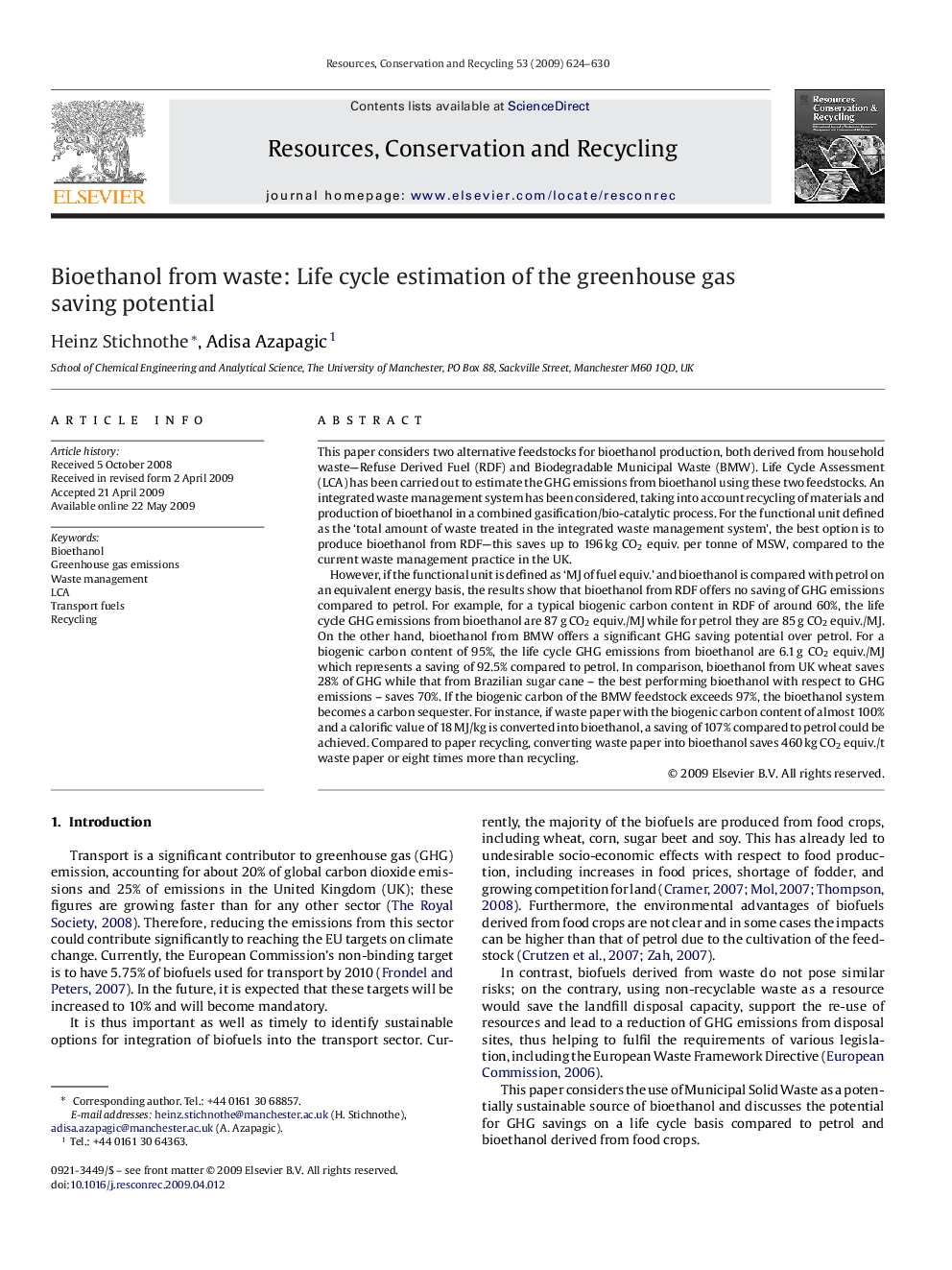| کد مقاله | کد نشریه | سال انتشار | مقاله انگلیسی | نسخه تمام متن |
|---|---|---|---|---|
| 1063615 | 948242 | 2009 | 7 صفحه PDF | دانلود رایگان |

This paper considers two alternative feedstocks for bioethanol production, both derived from household waste—Refuse Derived Fuel (RDF) and Biodegradable Municipal Waste (BMW). Life Cycle Assessment (LCA) has been carried out to estimate the GHG emissions from bioethanol using these two feedstocks. An integrated waste management system has been considered, taking into account recycling of materials and production of bioethanol in a combined gasification/bio-catalytic process. For the functional unit defined as the ‘total amount of waste treated in the integrated waste management system’, the best option is to produce bioethanol from RDF—this saves up to 196 kg CO2 equiv. per tonne of MSW, compared to the current waste management practice in the UK.However, if the functional unit is defined as ‘MJ of fuel equiv.’ and bioethanol is compared with petrol on an equivalent energy basis, the results show that bioethanol from RDF offers no saving of GHG emissions compared to petrol. For example, for a typical biogenic carbon content in RDF of around 60%, the life cycle GHG emissions from bioethanol are 87 g CO2 equiv./MJ while for petrol they are 85 g CO2 equiv./MJ. On the other hand, bioethanol from BMW offers a significant GHG saving potential over petrol. For a biogenic carbon content of 95%, the life cycle GHG emissions from bioethanol are 6.1 g CO2 equiv./MJ which represents a saving of 92.5% compared to petrol. In comparison, bioethanol from UK wheat saves 28% of GHG while that from Brazilian sugar cane – the best performing bioethanol with respect to GHG emissions – saves 70%. If the biogenic carbon of the BMW feedstock exceeds 97%, the bioethanol system becomes a carbon sequester. For instance, if waste paper with the biogenic carbon content of almost 100% and a calorific value of 18 MJ/kg is converted into bioethanol, a saving of 107% compared to petrol could be achieved. Compared to paper recycling, converting waste paper into bioethanol saves 460 kg CO2 equiv./t waste paper or eight times more than recycling.
Journal: Resources, Conservation and Recycling - Volume 53, Issue 11, September 2009, Pages 624–630